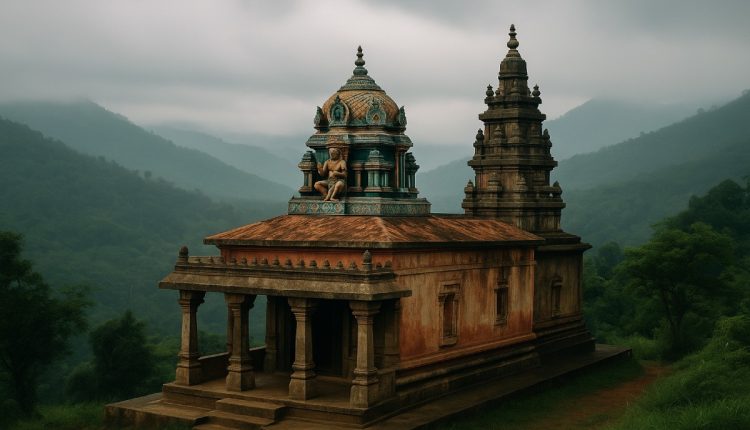A Myth Come Alive on the Emerald Isle
As a travel blogger, I’ve wandered through markets, misty hills, and mighty oceans—but nothing quite prepared me for the spiritual and mythical depth of Sri Lanka’s Ramayana Trail. Imagine stepping onto landscapes that breathe with ancient legend, where every stone tells a tale of gods, demons, and eternal love. This isn’t just a tour—it’s a pilgrimage through time.
The Ramayana Trail follows the believed path of events from the ancient Indian epic, the Ramayana, where Lord Rama journeys to Lanka to rescue his wife Sita from the demon king Ravana. Whether you are a believer or simply a lover of stories and culture, this trail offers an immersive travel experience like no other.
1. Munneswaram Temple – Where Rama Prayed for Forgiveness
My trail began in Munneswaram, near Chilaw. This centuries-old Shiva temple is where Rama is believed to have prayed after defeating Ravana to cleanse himself of Brahmahatya Dosha (sin of killing a Brahmin).
The temple was alive with chants, the air heavy with incense, and my heart… full. Even if mythology isn’t your thing, the spiritual aura is undeniable.
2. Manavari Temple – The First “Rama Lingam”
Just 20 minutes away lies Manavari Temple, home to the first Shiva Lingam installed and worshipped by Rama. The locals call it Rama Lingam, a title it shares only with Rameswaram in India. The quiet surroundings give you a rare moment to reflect.
3. Seetha Amman Temple – Echoes of a Captive Queen
Located in the cool hill town of Nuwara Eliya, the Seetha Amman Temple is believed to be built on the site where Sita was held captive in Ashok Vatika. It’s nestled beside a stream—where Sita is said to have bathed.
Statues of Rama, Lakshmana, Hanuman, and Sita inside the temple create an immersive aura of devotion and myth. The nearby Hakgala Botanical Garden, said to be the original Ashok Vatika, is stunning with its exotic flora.
4. Divurumpola – The Trial by Fire
This quiet village is associated with Sita’s Agni Pariksha (trial by fire). A sacred spot for Hindus and a serene stop for curious travelers, Divurumpola literally means “place of oath.” The tranquility is striking—it almost feels frozen in myth.
5. Ravana Ella Caves & Waterfall – Secrets of a King
No Ramayana journey is complete without exploring Ravana Ella Falls and the Ravana Caves in Ella. Legend says Ravana hid Sita in these caves. The waterfall, dropping from a height of 82 feet, is breathtaking—not just for its beauty, but its mythic resonance.
A trek into the Ravana Caves feels like stepping into the script of the epic itself. Echoes bounce off the rocks. You feel, if only for a moment, you might hear the rustle of a silk saree or the flutter of Hanuman’s wings.
Planning Tips for the Ramayana Trail
-
Best Time to Visit: December to April (dry and pleasant)
-
Suggested Duration: 7–10 days
-
Start Point: Colombo or Negombo
-
Ideal Route: Chilaw → Nuwara Eliya → Ella → Kataragama
-
Must-Carry: Lightweight clothes, comfortable trekking shoes, shawl for temple visits, and of course—a curious heart.
Flavours Along the Trail
Don’t forget to sample local Sri Lankan delights like kottu roti, string hoppers, and the ever-so-fragrant coconut sambol. The mix of Tamil and Sinhalese cuisines adds a tasty twist to your spiritual trail.
Moments That Stay
As I sat on a rock near the Ravana Falls, listening to water cascading in harmony with birdsong, I realised the Ramayana Trail isn’t just about gods or battles. It’s about inner journeys, belief, and the stories that shape us—whispered by trees, sung by rivers, and etched in stone.
“Sometimes the greatest journey is the one that brings you home to your roots.”


Comments are closed.